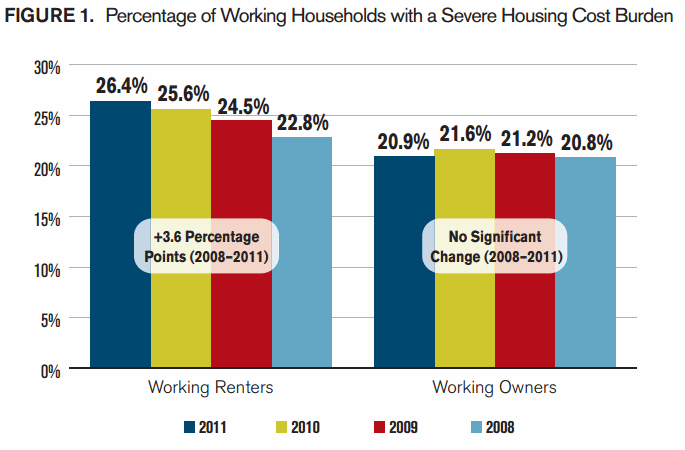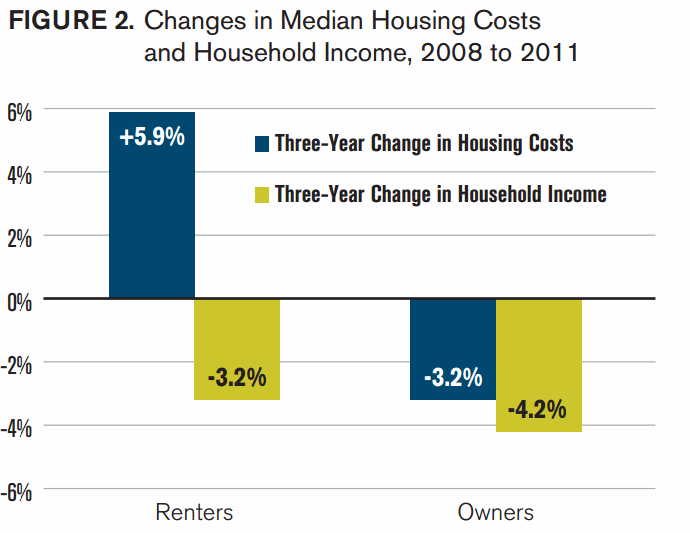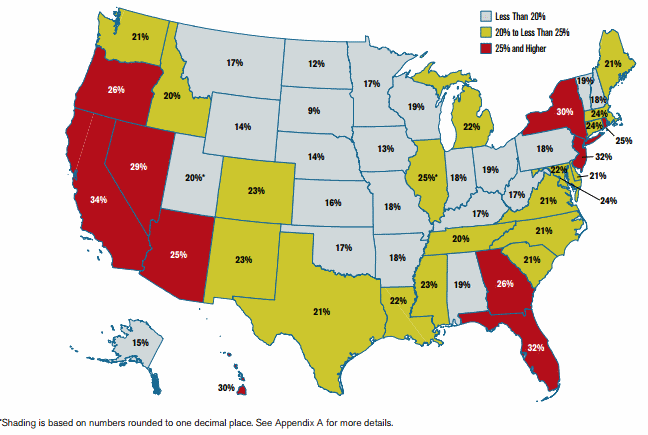The Center for Housing Policy today released a report on housing affordability among working households in the US. The report concludes an ongoing uptrend in the incidence of “severe housing costs” among 'working renters' whereas 'working owners' actually saw a decrease from 2010 to 2011. Despite the trend, the pace of increases for renters did decline somewhat in 2011, falling to a 0.9 percent pace vs a 1.1 percent pace in 2010.

The report defines 'severe housing costs' as a factor of both household income and housing expenses. It characterizes 'working households' as having members who work at least 20 hours a week and earn less than 120 percent of the median income in their area.
The reason for the disparity between owners and renters has to do with the "housing expenses" side of that equation. In fact, based purely on changes in income, the 'working owners' category lost more income over 3 years than 'working renters,' but the income loss was offset by a decrease in housing costs.
Those costs declined by 3.2 percent from 2008 to 2011, with an income loss of 4.2 percent making things only slightly worse for owners. Working renters, on the other hand, only saw a 3.2 percent decline in income, but a massive 5.9% INCREASE in housing costs.

Data also varied widely based on geographical area, with significant increases in Georgia, Louisiana, New Jersey, New York, Oregon, and Pennsylvania in the first year of the study. Although incidence of severe housing costs have leveled off since then, the report notes some states continue to sustain high levels of severe housing costs.
"there were 10 states where at least one in four working households was severely cost burdened. In an additional nineteen states, at least 20 percent of working households (but not more than 25 percent) were severely cost burdened in 2011."








